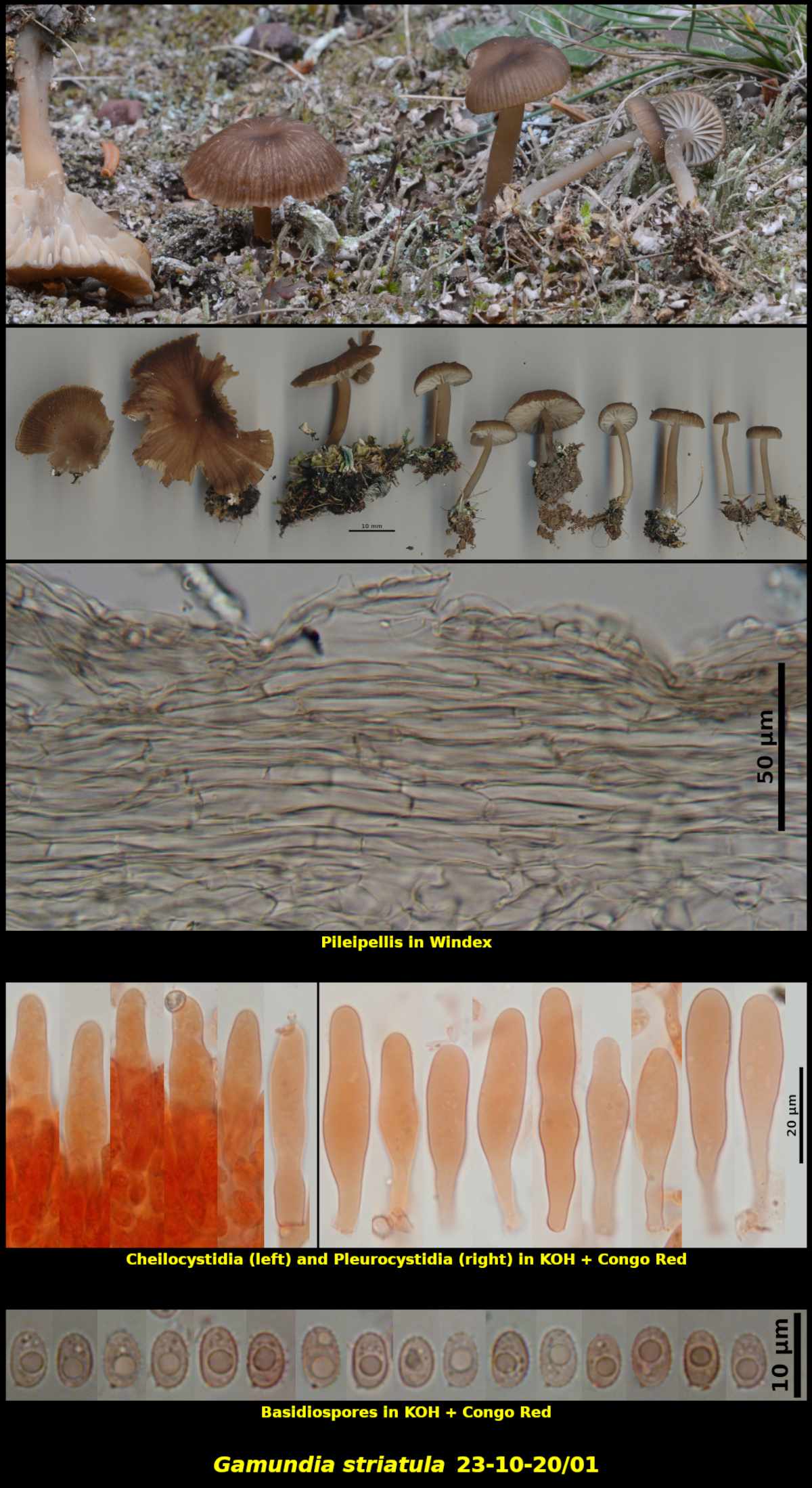Fleshy Fungi of New Brunswick >>
Gamundia striatula
Gamundia striatula (Kühner) Raithelh.

Gregarious (15) in a weedy lawn with mosses and lichens, with no close trees, Little Lepreau, New Brunswick (23-10-20/01).
Pileus omphalioid, convex at first, expanding to more broadly so and finally somewhat infundibuliform in age, with a conspicuous central depression, striate, moist, glabrous, dark reddish brown (HSV00:60:20-30) at first, hygrophanous, 12-38 mm in diameter. Stipe equal, white-pruinose at the apex and very finely pruinose as viewed with a dissecting microscope below, white-mycelial at the base, dry, dull greyish orange brown (HSV30:30:70-80) to orange brown (HSV25:50:40), subcartilaginous, 18-28 x 2-3 mm. Lamellae white to cream, becoming more yellowish white in age, close to subclose, adnate, not marginate. Flesh concolorous with the surface tissues, with a pronounced mushroom odour, lacking a distisnctive taste.
Basidiospores very pale yellow to nearly white in spore print, ellipsoidal, echinulate, without colour changes in Melzer’s Solution, 5.7-7.7 x 3.9-4.7 μm, Q = 1.40-1.73 (average[48]: 6.7 x 4.3 μm, Q = 1.55) excluding the spines, with spines very narrow and up to 1.0 μm in length. Cheilocystidia scattered along the edge of the lamellae, not forming a continuous sterile layer, ventricose to narrowly lageniform, thin-walled, with a basal clamp connection, 43-50 x 7.7-9.6 μm. Pleurocystidia abundant, scattered, clavate to ventricose or sublageniform, with a basal clamp connection, thin-walled, 32-51 x 6.7-9.8 μm. Basidia clavate. 4-spored, with a basal clamp connection. Pileipellis a cutis of narrow brown hyphae. Clamp connections present on most septa.
Gamundia striatula is an inconspiuous little mushroom without strongly defining macroscopic features. The dull brown hygrophanous caps with a central depression and white gills might suggest a species of Arrhenia or Clitocybe. Microscopically it is distinctive in having spiny basidiospores and prominant pleurocystidia. According to Barrasa et al. (The Lichenologist 42: 485-490. 2010) there have been some reports in the literature that G. striatula is lichenicolous, forming an association with species of Peltigera. Collection 23-10-20/01 was made in a site where these lichens were quite abundant, although there was no evidence of a direct association.
Photograph: D. Malloch (23-10-20/01).